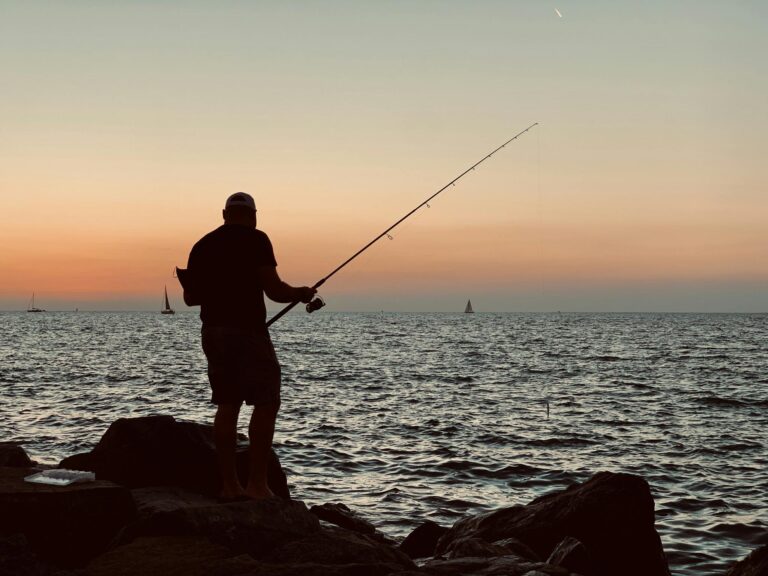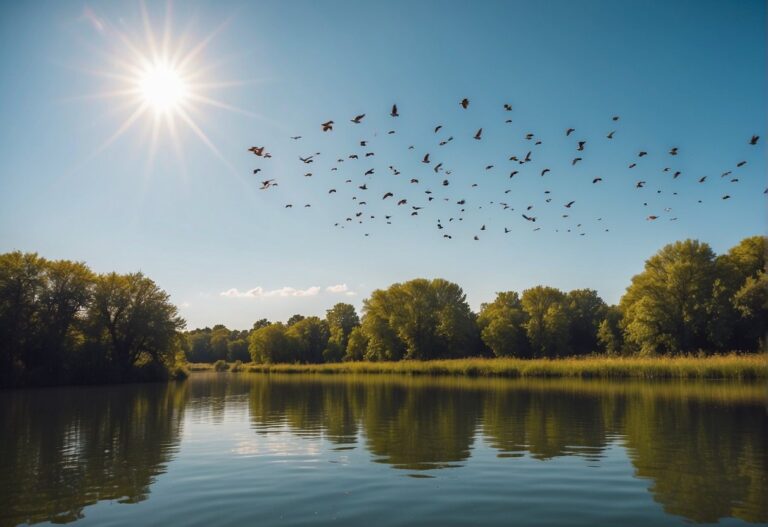Best Fishing Line for Crappie: Unrivaled Choices for Successful Angling
Fishing for crappie is a pastime that can be both relaxing and exciting. These fish, known for their distinct black and white patterning, are a popular catch among freshwater anglers due to their delicious taste and the fun challenge they present.
When targeting crappie, the right gear can make a significant difference, and the choice of fishing line is crucial. A line that is too heavy or visible may spook the fish, while one that is too light could break when you hook that trophy slab.
Monofilament, braid, and fluorocarbon lines each offer unique advantages for crappie fishing.
Monofilament is stretchy and forgiving, making it a good choice for beginners or for fishing around structures where crappie like to hide.
Braid offers high sensitivity and strength, allowing you to feel the slightest nibble and pull in the big ones without breaking.
Fluorocarbon, nearly invisible underwater, is the stealthy option for clear waters where crappie are easily startled.
When selecting a fishing line for crappie, consider factors like water clarity, cover type, and your own fishing style.
In murky waters, the visibility of the line is less of an issue, though strength and abrasion resistance come to the forefront.
For clear waters, we usually lean towards a low-visibility line to outsmart these sharp-eyed critters.
Other considerations include the line weight, which should generally be light to ultra-light for crappie, and whether the line’s memory (its tendency to coil) is low enough to cast small lures with precision.
Top Crappie Fishing Lines
Crappie angling is a delicate art, and the line you choose serves as your brushstroke on the water’s canvas.
We’ve cast our nets far and wide to bring together a collection of lines that are as reliable as a good fishing tale around a crackling campfire.
Each one promises to have you reeling in crappies as if you were the pied piper of the pond.
Whether you prefer the stealthy approach with a low-visibility line or the brawny battle with a heavy-duty option, our roundup addresses every crappie whisperer’s dream.
Keep your rods ready, as we’re about to guide you through the elite ranks of fishing lines that could make the difference between a trophy catch and the one that got away.
KastKing Advanced Mono
If you’re angling for crappie, we can confidently say that this is a line to consider; it’s like your stealthy partner in the shadows, often unnoticed but always reliable.
Pros
- Outstanding smoothness that aids in longer casts
- Resistant build that shrugs off rough encounters with structures
- Less stretch, giving us a keen sense of the lightest nibbles
Cons
- May not be as invisible as some premium fluorocarbons
- The softness could feel different if you’re used to stiffer lines
- Limited color options which could be a let-down for some anglers
Our fingers worked the KastKing Advanced Mono with ease, and we were impressed by its stealthy nature in the water.
Despite sharing a workspace with wood pilings and jagged rocks, the line stood up to abrasion much like a boxer shrugs off a light jab.
Casting felt like throwing a pebble across a still pond, effortless and smooth. With each release, the line sailed through the guides, hinting at its quality construction.
We didn’t spend our time untangling or cursing at wind knots; instead, we watched our bobbins dance on the water’s surface, always ready for the thrill of a strike.
The line’s subtleness beneath the water was notable. Though not quite at the vanishing act level of some fluorocarbons, it played hide and seek well enough with the crappie.
Sensitivity was on point—every twitch and brush against our lures transmitted as if we were connected by strings to the fishes’ mouths.
Lew’s Mr. Crappie Monofilament
If you’re setting your sights on hauling in crappie, this Lew’s line is a solid choice with its fine blend of visibility and strength.
Pros
- High visibility for easy jig tying and line management
- Low memory for better castability and handling
- Abrasion-resistant to withstand rough conditions
Cons
- May not suit anglers who prefer subdued line colors
- Some may find it less sensitive compared to thinner lines
- The high-visibility color might not be ideal in extremely clear waters
There’s a certain thrill in threading a fine line between success and the one that got away.
With this line spooled on our reels, we hit the water knowing that strong, visible, and resilient line is literally at our fingertips.
Its high-visibility hue was a beacon when tying flies, and crappies didn’t seem put off by the color—even in shallower waters.
We admired the low memory of the line as it eased off the reel and danced across the water’s surface; it was a symphony of casts and retrieves.
Being exceptionally abrasion-resistant, it stood up to the underwater jungles of stumps and debris, providing a sense of trust in the integrity of our setup.
However, we have to be straight with you, this line does cater to a specific style.
If blending into the aquatic environment is your modus operandi, the line’s vibrancy might contrast a little too sharply for your taste.
In addition, the line’s thickness, while reliable, isn’t the top of the class in sensitivity—a quality some seasoned crappie chasers seek out.
KastKing Premium Mono
After a weekend out on the water targeting crappie, it’s become clear that KastKing’s Premium Mono is a trustworthy choice for anglers looking for a balance of durability and finesse.
Pros
- Exhibits low memory, reducing the pesky twists and tangles
- The abrasion resistance is impressive, handling underwater obstacles well
- Comes in a discrete clear color and other options for tactical fishing
Cons
- Higher visibility in water than some premium lines
- Though versatile, there are specialized lines for certain conditions
- A limited choice of pound tests might not suit all crappie fishing styles
We recently had the chance to spool up the KastKing Premium Mono on our go-to crappie setup.
The first thing we noticed was its low memory. Thanks to this feature, we enjoyed smooth casting throughout the day with minimal line twists.
Despite targeting areas with plenty of underwater snags, we were impressed with the line’s abrasion resistance.
It took on the challenge of brush and debris without a single sign of wear, which is critical when we’re pulling through hook-holding structures.
When switching between clear and stained water conditions, the line’s superior clarity proved invaluable.
However, for those fishing in extremely clear waters, the visibility could be a slight concern. But for our purposes, it was not a deal-breaker.
Versatility is the name of the game when discussing the KastKing Premium Mono.
While it’s well-suited for crappie fishing, we felt its range in such a specialized scenario can be somewhat limited compared to lines with a broader range of pound tests.
Lastly, the affordability is a pleasant surprise, ensuring we’re not breaking the bank. The only caveat we encountered was finding other lines in this price bracket that offer a bit more specialization for certain conditions.
Stren Original Mono
If you’re on the hunt for crappie, Stren Original Monofilament should be on your reel for an experience that marries visibility with reliability.
Pros
- Exceptional knot and tensile strength for secure hook sets
- High visibility aids in line tracking
- Handles well with low memory for fewer tangles
Cons
- May stand out too much in ultra-clear water conditions
- Monofilament is less abrasion-resistant compared to fluorocarbon
- Not the best choice for deep water due to line stretch
Casting into the shimmering waters at dawn, we immediately noticed the high visibility of the Hi-Vis Gold color.
It shines brilliantly in the early light, letting us expertly track even the slightest movement that might indicate a nibble.
We found the handling to be stellar; the low memory meant that we spent more time enticing crappie with our lures rather than battling with annoying tangles.
Tying knots felt secure, effortless even, and the strength ensured that once we hooked a lively crappie, it stayed on until it hit the cooler.
Buying Guide
Understanding Line Types
We need to first recognize the different types of fishing line available:
- Monofilament: Stretches more, which can be forgiving with a thrashing crappie.
- Braided: Offers exceptional strength and sensitivity, allowing us to feel the slightest nibble.
- Fluorocarbon: Nearly invisible underwater, it’s fantastic for clear waters where crappie are skittish.
Line Weight
Choose a line weight suitable for our quarry:
- Light Lines (4-6 lbs): Perfect for small crappie in clear, open water.
- Heavier Lines (6-10 lbs): Best for larger crappie or areas with heavier cover where snags are common.
Visibility vs. Strength
Striking a balance is key. A line too visible may spook crappie, but we need a line strong enough to not break when the “big one” bites. Aim for the “Goldilocks zone” – just right for the conditions at hand.
Sensitivity
It’s crucial to detect those subtle bites. The higher the sensitivity, the more we’ll feel.
Durability
Compromise between thinness and the ability to withstand the elements and abrasion is a must. Look for lines that promise good abrasion resistance without being too thick.
Memory
Less memory equals fewer tangles and more pleasant fishing:
- Low: Suggests the line will lay straighter, reducing the risk of annoying bird’s nests.
- High: Might coil like a spring, leading to potential issues on the reel.
Frequently Asked Questions
In our extensive experience with crappie fishing, we’ve pinpointed some critical factors for success. Let’s address these often-pondered queries.
What type of fishing line is most effective for targeting crappie?
When we’re angling for crappie, our go-to line is usually a high-visibility monofilament. It’s got enough give to prevent break-offs when crappie make their sudden, spirited runs.
How does line color impact crappie fishing success?
The line color can play a surprising role in our catch rates. Clear and light blue lines tend to blend in with the water, which can be especially useful in clear conditions, making it hard for crappie to spot.
What is the recommended line weight for catching crappie?
For crappie, we generally recommend:
- Light line in the 4-6 pound test range, delivering a stealthy approach to avoid spooking the fish.
- A thinner line for better bait presentation, enhancing the natural appearance of lures.
Is monofilament or braided line better for crappie fishing?
Each type of line has its merits:
- Monofilament is stretchy and forgiving, with good sensitivity for detecting light bites.
- Braided line offers superior strength and durability, ideal for situations with heavier cover when snags are a concern.
What fishing line setup do professional crappie anglers recommend?
Professional anglers often suggest:
- Using a combination of light monofilament with a fluorocarbon leader for ultimate invisibility.
- Adjusting the length of the leader based on water clarity and vegetation levels.
Does line thickness affect the catch rate in crappie fishing?
Absolutely, line thickness can make or break our fishing excursions:
- Thinner lines lead to better bait presentation and less water resistance. This can translate to more bites.
- But, we have to balance delicacy with the strength to pull those slab crappies out of thick cover.







